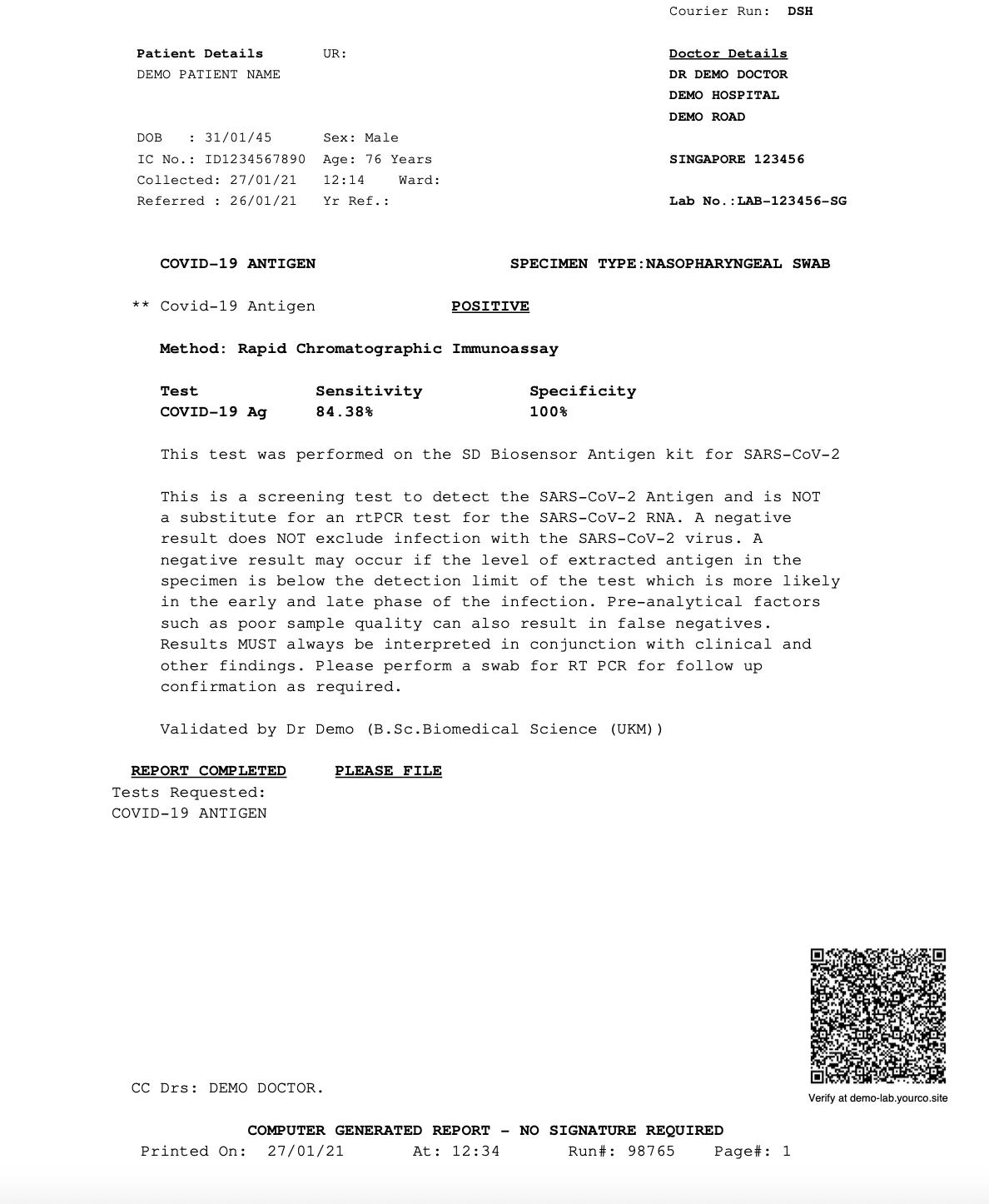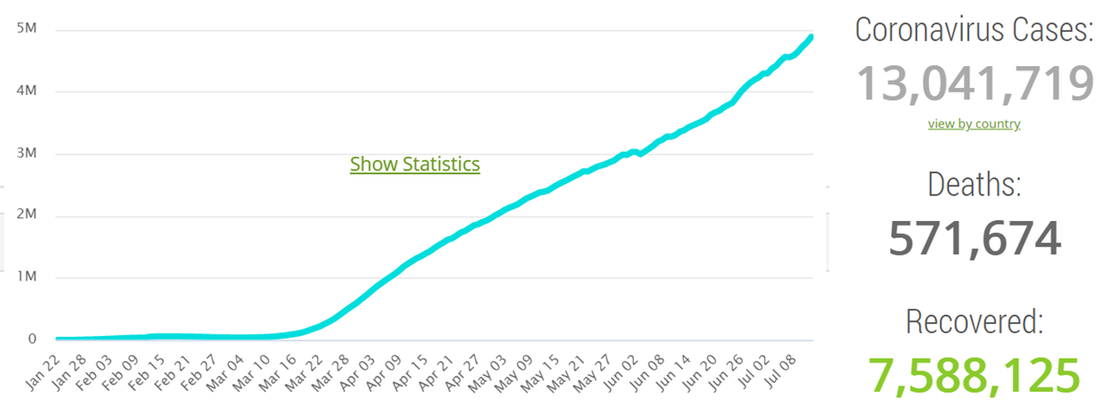Did you know - there is an easy way to incorporate document security with your LIS
- Rajesh Soundararajan
- Apr 06, 2021
- 6 min read

Integrate QR Code security into report production systems
In our earlier post - How do you integrate secure QR code with LIS in healthcare with minimal or no changes? we had discussed using Files API for LIS. For most labs using modern LIS there is a far easier way of having document security incorporated into the lab reports. All it needs is a normal API integration which enables a secure QR code to be placed on the report for subsequent verification. This post will share a quick overview of how that can be done using Rest API and how this is applicable for physical-digital format which has several advantages over just the purely digital or purely physical approach. This is done with zero to minimal changes to the existing LIS systems and massively simplifies final tamper proof document generation and verification. The process used is a Rest API method which is a way of making outgoing API calls from the LIS itself. But first let’s see why are security and verification so important for lab reports.
Tampering of Lab reports is rampant
That lab reports are being tampered with is a known fact and a global phenomenon. The current pandemic has exposed the fragility and under-preparedness of existing systems to have an authenticated report generation and distribution mechanism which works to verify a document at all locations .
When lab certificates and reports are accessed by a wide-ranging audience to facilitate movement and access such as for work, in schools, for travel (e.g at border checkpoints, immigration), at the entry to malls and other venues, the need for authentic verifiable documents becomes paramount.
Qryptal offers a Rest API based solution to add a secure QR code to lab reports either as a cloud-based offering or an on-premise solution. This API integration can be done easily and many of our customers have been able to use this to generate secure QR codes in as little a time as a day or two. Qryptal’s Rest API solution adds a secure QR code to lab reports in a seamless manner with easy integration, minimal intervention and maximum flexibility for modern LIS systems that generate reports and certificates.
It is so easy to try out our cloud offering to see how to integrate with your existing LIS. Our responsive support team is just an email and call away if you need any assistance etc.
Physical-digital formats have to become the norm
Unlike in the past, where the reports were based purely on physical formats like paper and unlike the complex digital alternatives like blockchain (read Why Having Immunity Passports on Blockchain is a bad idea), physical-digital formats combine the best of both worlds.
This blend of physical and digital world is where a secure QR is generated digitally and can be then placed on both the physical as well as the electronic version of the document as required. Either version can be verified easily. Hence a physical document can be verified via a digital technology (secure QR). This helps citizens who may not have digital skills, get access to services in the same way as more tech savvy people can. The system can still deal with revocation and updation because that can be done at the back end and the secure QR can be verified to get the latest status. It works on the principles of privacy, transparency, interoperability and does not need any database access. But the key point is that the physical-digital approach is more equitable and does not discriminate against people due to lack of technology or digital skills. .
Qryptal provides a solution for such labs looking for solutions that could integrate with the existing report production systems and deliver secure and verifiable physical-digital reports and certificates with speed, simplicity, and affordability.
Since these reports & certificates may be electronic or paper-based and can maintain the same security level as well as be easily verified in both situations, this allows people of all digital abilities to use and benefit from the systems.
Rest API Integration – flexible and efficient
Some laboratory systems are already designed to make outgoing API calls (Rest API) to other systems to obtain a digitally signed QR to be placed on the test report.
These LIS systems make API calls (or in other words Qryptal Provides a Rest API mechanism) to generate a digitally signed secure QR to be incorporated into test reports and vaccination certificates. Below is a process flow diagram that shows this for an on-premise solution.

Rest API Integration workflow
Automated, Offline and Public validation
The generation of secure documents is the easier part. What makes the solution truly effective is the ability to allow for a range of validation options which can even work for offline and/or bulk, automated systems. .
Automated validation: Such systems support API based automated validation enabling easy integration in workflows like online check-ins.
Offline validation: The system works for offline validation which means that such a solution provides for trouble-free high volume decentralised validation in all kinds of locations: air-gapped immigration/border controls, airline check-in counters and any venue wanting to ensure safety for all but not necessarily having network connectivity. This takes the load off your server infrastructure. This is also more secure as there is no need for database access.
Public validation: Empowering the public to be able to easily validate these certificates can be an essential enabler to ensure safe opening at scale.
Level playing field, more inclusive: A very critical advantage of using the physical-digital approach is that it allows even those without digital skills or who struggle with technology to be a part of the system to get their reports verified and access the services as desired.
An architecture that ensures privacy and integration
Streamlined Architecture: This solution is deployed as a microservice to enable quick and easy deployment at scale.
Privacy: Decentralized validation based on open standards enables true privacy for all stakeholders: certificate holder, issuer, and verifier.
Integration with existing document production systems: Rest API integrates seamlessly with existing document production systems and workflows and minimal to zero changes are required for adoption.
Here’s a report produced using such an API integration

Sample Lab Report with Secure QR Code
Please reach out to us for a detailed discussion on this.
You may also like to read -
- ‘Digital Vaccine Certificates or Immunity Passports’ - How to make….
- Are fake ‘COVID-19 test certificates’ spreading faster than the …
- Cyprus to Bangladesh, fake COVID-19 certificates is now a global …

